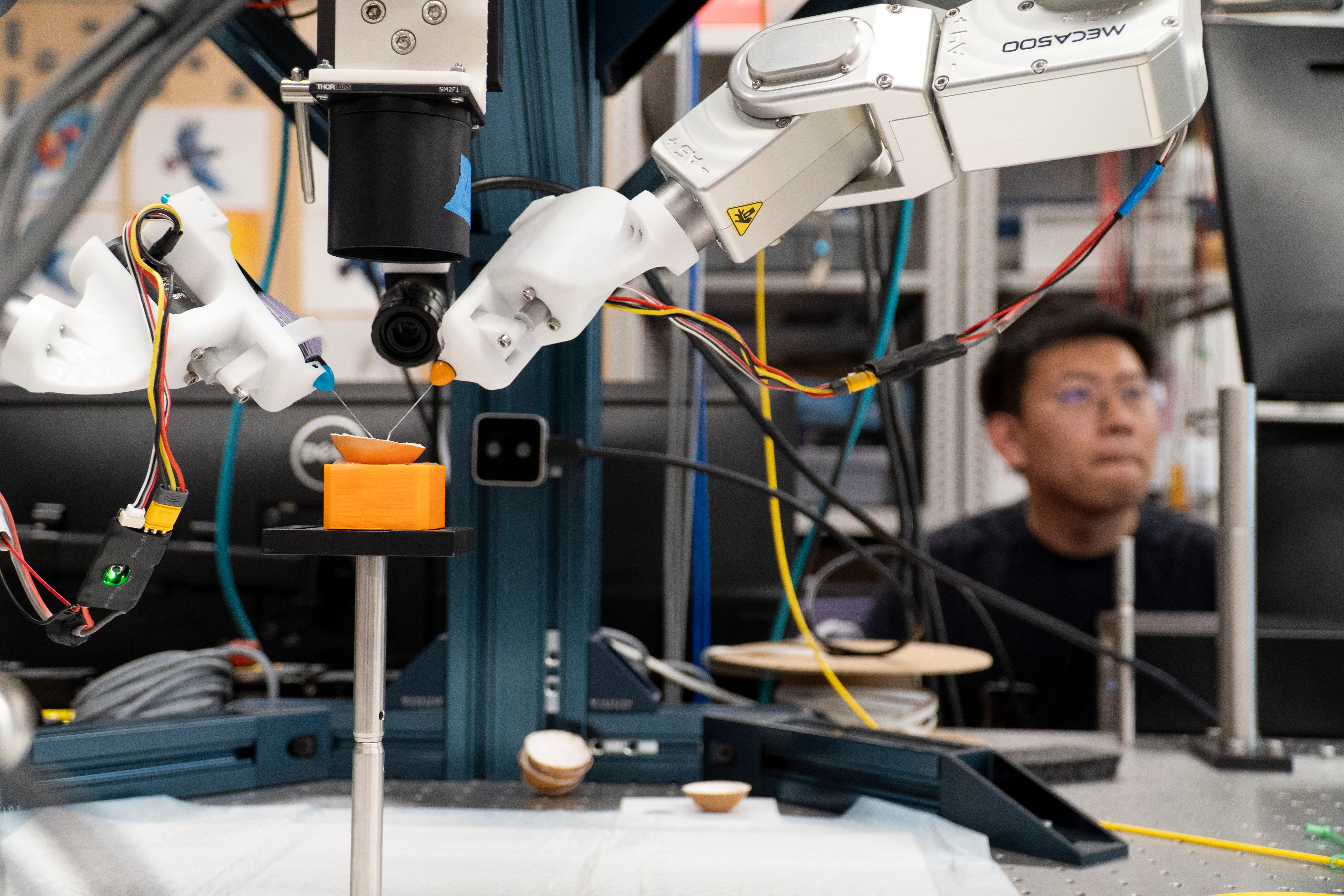Dr. Mark Draelos, assistant professor of robotics and ophthalmology, received the National Institutes of Health (NIH) Director’s New Innovator Award for a project which seeks to improve how delicate microsurgeries are conducted by scaling up tissue to a size where surgeons could “walk across the retina” in virtual reality and operate on tissue as if “raking leaves.”
“We want to change the scale of the surgical procedure and make it human size, so it’s much more comfortable for the surgeon to operate,” said Draelos.
“We do this by capturing a 3D reconstruction of the surgical field in real time, and immerse the surgeon in virtual reality. We then take the surgeon’s movements that they perform at human scale and minify them down for a robot to perform very precisely.”
The project has to overcome several challenges, including accurately reconstructing the surgical field in real time with enough quality for the surgeon to operate, translating the years of previous surgical education and training onto a new platform, and training artificial intelligence to handle routine portions of the surgery, such as suturing and knot tying.
The NIH Director’s New Innovator Award, a part of the High-Risk, High-Reward Research program, supports “early career investigators of exceptional creativity who propose bold and highly innovative research projects with the potential to produce a major impact on broad, important areas.”
Draelos’ Image-Guided Medical Robotics Lab specializes in developing optical coherence tomography imaging systems and integrating them with robotics. Optical coherence tomography, or OCT, is a laser-based imaging modality that allows volumetric reconstructions of objects in real time at a micrometer scale with high fidelity.

“My vision for medical robotics is not to replace surgeons, but to develop robotic tools that we can use to extend the operating careers of surgeons and expand their capabilities,” said Draelos.
“I’m excited about the ultimate clinical translation of these technologies and the patients whose lives they might improve. In ophthalmology, delicate microsurgeries can restore vision, which is transformative for a patient’s life.”
In addition to ophthalmology, Draelos points to applications in tumor removal, neurosurgery, plastic surgery, and transplants. He also believes the group’s research in perception and manipulation in complex, dynamic scenes will be able to be generalized to many other robotics applications.